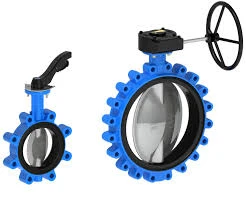ਦਸੰ. . 01, 2024 17:02 Back to list
y strainer valve
Understanding Y-Strainer Valves Essential Components for Fluid Filtration
Y-strainer valves are critical components used in various piping systems to filter out unwanted particles and impurities from fluids. These valves play a significant role in maintaining the efficiency and longevity of systems across several industries, including chemical processing, water treatment, and oil and gas. Understanding the function, design, and benefits of Y-strainer valves can help users make informed decisions when selecting the appropriate components for their systems.
What is a Y-Strainer Valve?
A Y-strainer valve is typically utilized in fluid systems to prevent debris, sediment, and other contaminants from entering and damaging downstream equipment, such as pumps, compressors, and heat exchangers. The name Y-strainer derives from the valve's distinctive shape, resembling the letter Y. This design allows for efficient fluid flow while providing ample space for filtration.
The Y-strainer features a straining element, usually made of stainless steel, bronze, or nylon, placed within the strainer body. As fluid flows through the valve, it passes through the straining element, which captures particles based on size and type. These particles build up within the strainer and need to be periodically removed to maintain optimal performance.
Design and Materials
One of the reasons Y-strainer valves are favoured in various industries is their versatility in design and materials. They can be configured in different sizes and shapes to suit specific application requirements, and they are available for both liquid and gas services. The materials used in construction, including brass, stainless steel, PVC, and cast iron, allow these strainers to endure different pressures and temperatures. This adaptability makes Y-strainers suitable for a wide range of environments, from harsh chemical processes to more benign applications like irrigation systems.
Moreover, Y-strainer valves can be equipped with various end connections, including threaded, flanged, or welded options, making them easy to integrate into existing piping systems.
y strainer valve

Applications of Y-Strainer Valves
Y-strainer valves are extensively used in various industries for numerous applications. In the water treatment industry, they help ensure clean water by filtering out debris and other contaminants before the water is treated or distributed. In chemical processing, these valves play a vital role in protecting sensitive equipment from harmful impurities that could lead to system failures or safety hazards.
In the oil and gas sector, Y-strainers are invaluable in upstream, midstream, and downstream applications, as they prevent particulates from damaging pumps and compressors. They are also used in heating ventilation and air conditioning (HVAC) systems to filter dirt and dust from fluid systems, contributing to improved air quality and system efficiency.
Maintenance and Best Practices
To ensure the optimal performance of Y-strainer valves, routine maintenance is crucial. The straining element may become clogged with debris, which can restrict flow and reduce the efficiency of the system. Regularly inspecting and cleaning the strainer can prevent these issues. Depending on the application, users may select between different cleaning methods, including backwashing, manual cleaning, or replacing the straining element altogether.
It is also advisable to monitor the pressure drop across the strainer regularly. Significant pressure drops can indicate that the strainer is clogged and requires attention. By maintaining a clean and functional Y-strainer, users can significantly extend the life of their system components and reduce the risk of costly repairs.
Conclusion
In summary, Y-strainer valves play a crucial role in various industries by ensuring the continuous flow of clean and uncontaminated fluids. Their unique design, versatility in materials, and wide range of applications make them an essential component in fluid management systems. By understanding the function and benefits of Y-strainer valves, users can implement effective filtration solutions that enhance system performance and reliability. Regular maintenance practices will further ensure these valves operate efficiently, contributing to the overall longevity of the system they serve.
Share
-
Reliable Wafer Type Butterfly Valves for Every IndustryNewsJul.25,2025
-
Reliable Flow Control Begins with the Right Ball Check ValveNewsJul.25,2025
-
Precision Flow Control Starts with Quality ValvesNewsJul.25,2025
-
Industrial Flow Control ReliabilityNewsJul.25,2025
-
Engineered for Efficiency Gate Valves That Power Industrial PerformanceNewsJul.25,2025
-
Empowering Infrastructure Through Quality ManufacturingNewsJul.25,2025